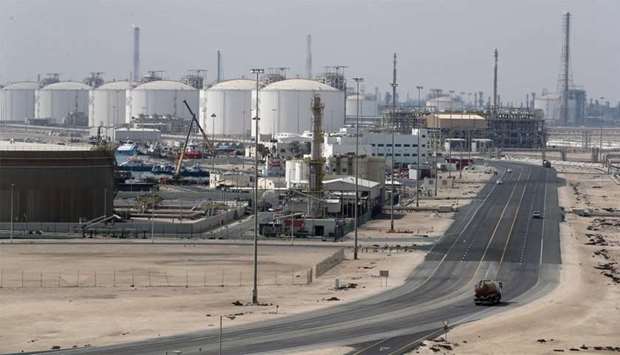Qatar managed to maintain its position as the largest liquefied natural gas exporter in the world (at 77.8mn tonnes) in 2019, International Gas Union (IGU) said in its "2020 World LNG Report".
Global LNG trade increased further in 2019, reaching 354.73mn tonnes, an increase of 40.93mn tonnes since the end of 2018. This constitutes an increase of 13%, a sixth year of consecutive growth, it said.
Most of the additional exported volumes in 2019 were from existing exporting markets: US (+13.1mn tonnes), Australia (+8.7mn tonnes) and Russia (+11mn tonnes).
“The Qatar LNG expansion plan is progressing towards final investment decision (FID) and those capacity additions could re-position Qatar as the market with the largest liquefaction capacity globally,” the IGU noted.
According to the IGU, top LNG exporter Qatar is followed by Australia at (75.4mn tonnes).
The US (33.8mn tonnes) overtook Malaysia (26.2mn tonnes) as the third largest exporter, and added record export volumes. Russia is now the fourth largest exporter of LNG (29.3mn tonnes).
Asia Pacific continued its growth trajectory as the largest export region (131.7mn tonnes), the IGU said.
Only three markets saw a drop in export levels versus 2018: Indonesia saw the largest drop in export (-2.7mn tonnes), followed by Equatorial Guinea (-0.65mn tonnes) and Norway (-0.45mn tonnes).
“No new importers were added to the list in 2019. However, most recent new importers increased imports further in 2019, such as Bangladesh, Pakistan, Poland and Panama,” the IGU said.
The largest increases in imports were seen in Europe, with the UK, France, Spain, the Netherlands, Italy and Belgium accounting for most of the additional imports (+32mn tonnes). Asian and Asian Pacific markets that contributed to global trade were China, India and Malaysia.
The largest importing regions, consistent with 2018, were Asia-Pacific (131.7mn tonnes) and Asia (114.5mn tonnes).
Currently, 907.4mn tonnes per year (mn tpy) of liquefaction capacity is in pre-FID stage, with the majority of the proposed capacity coming from the US and Canada.
Africa has 93.3mn tonnes per year of liquefaction capacity proposed and could emerge as a key LNG production region if those projects materialise.
The record volume of sanctioned liquefaction projects is underpinned by the expectation of growing LNG demand globally, creating the need for additional liquefaction capacity. This will also lead to competition to secure engineering, procurement, construction (EPC) capacity, as project developers aim to enter the market by the mid-2020s in order to capture growing demand, the IGU noted.
Joe M Kang, president, International Gas Union said, “Gas continues to play a vital role towards an economically and environmentally sustainable energy future. LNG in 2019 continued to play a key role in improving air quality in markets such as China.
“It produces less than 10% of the particulates and 50% less greenhouse gas (GHG) than coal when used in power, 21% less than fuel oil in transport and above 95% efficiency when used to heat homes. The industry continues to improve measurement and reduction of emissions across the full LNG value chain.
Kang noted, “Almost a billion people today have no access to electricity and nearly 3bn have to cook with fuels that produce toxic fumes in their homes. Indoor air quality still represents a large part of the premature deaths attributable to air pollution (3.8mn deaths in 2016) – proof of the urgent need to tackle this issue.
“As the cleanest burning fossil fuel, natural gas has a key role in providing reliable and cleaner energy to all. Even in the most developed markets, affordability and reliability of clean energy is a key issue and switching to natural gas offers an enormous opportunity. The IGU will continue to demonstrate the vital environmental and economic role of gas in the sustainable energy future and encourage collaboration between industry and communities towards achieving this future.”




